by Tim Meisburger
Allegations that the U.S. Department of Justice and the Federal Bureau of Investigation have been politicized and weaponized against Republicans are in the news. It is commonly acknowledged that most federal employees lean left and vote Democratic, but this is usually said to make little difference. Prior to the 2022 election, a survey by Government Executive magazine said federal workers preferred Democrats 47 percent to 35 percent in House races, and 37 percent to 33 percent for the Senate.
That doesn’t seem to be a great enough difference to justify allegations of a “deep state” within the federal bureaucracy, but just how accurate is this polling for the specific case of the FBI and Justice Department? It doesn’t seem beyond the realm of possibility that a magazine intended for consumption by government executives might subconsciously weight a poll it presents to portray the bureaucracy in the best possible light. Moreover, even if the poll is accurate for federal employees nationwide, it may not necessarily reflect the political preferences of particular regions or particular agencies.
Another more objective measure is needed to accurately determine political orientation. Obviously, the best metric would be a record of how federal employees actually vote, but since that data is not available, a next best might be to follow the money, and examine the candidates and causes to which the employees donated. Luckily, that data is available, through public records held by the Federal Election Commission.
To determine if political orientation of career employees could be a contributing factor to institutional politicization at the FBI and Justice Department, I looked at political donation records for the 2020 and 2022 election cycles. I looked at both national results, and then, as a proxy for Washington D.C., broke out results from the District of Columbia, Maryland, and Virginia (aka, the DMV).
Obviously, not all employees contribute to political campaigns and causes, but I do think this data still provides the best readily available evidence of the prevailing political orientation of these institutions. Similar analysis has been conducted by others (albeit using slightly different parameters and periods) that broadly validates this approach and these results.
The Department of Justice
During the 2019-20 election cycle, 80 percent of those employees at the Justice Department who contributed to political candidates and causes favored Democrats, and 20 percent favored Republicans. When I reran the analysis using only those employees living in the DMV area (as a proxy for Justice Department headquarters), those who favored Democrats increased to 89 percent of all employees.
Since this was during a Republican administration, some portion of the 11 percent of Republican donors will have been political appointees, rather than career employees, meaning the actual percentage of Democrat-leaning employees is probably significantly more than 90 percent. The influence of the Republican appointees is also apparent in the much higher average donation from Republicans, as political appointees tend to be higher ranking (i.e., better paid) than the average career employee, and are much more likely to contribute to political campaigns.
During the 2021-22 election cycle I found a broadly similar donation pattern, with 82 percent of Justice Department employees across the country contributing to Democratic candidates and causes, and that figure rising to 92 percent in the DMV area. The slightly higher percentages for Democrats was most likely caused by the departure of the Republican appointees and arrival of the Democratic appointees of the Biden Administration.
Although this research doesn’t prove the existence of a “deep state” at the Justice Department, it certainly indicates a level of homogeneity that would facilitate a culture of one. More importantly, it clearly indicates a homogeneity of thought and ideology that is unrepresentative of the nation at large, and could (if only unconsciously) lead to bias or maladministration of policies approved by the American electorate. The imbalance in representation is so profound, it also indicates systemic and institutionalized discrimination in hiring, which may not be surprising given that the government employee unions give almost all of their political contributions to Democratic candidates and causes.
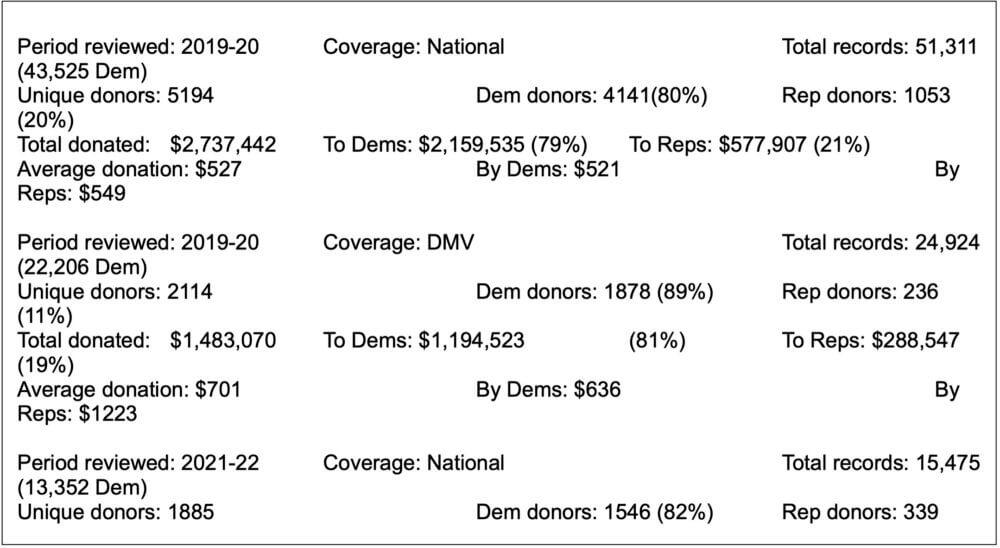
The Federal Bureau of Investigation
The FBI—which spied on the 2016 Trump campaign at the direction of the Obama Administration, played a central role in the Russian Collusion hoax initiated by the 2016 Clinton campaign, was found to have engaged in entrapment during the Whitmer kidnapping hoax, has harassed and persecuted Trump supporters and officials, staged a SWAT-style raid on the former president’s home, and is currently refusing to release documents which purportedly show Biden family corruption—is perceived by many to be more corrupt, partisan, and politicized than any other agency. Surprisingly, my findings suggest a different, and in some ways even darker, profile of politicization at the agency.
During the 2019-20 election cycle, there is a relatively even split at the national level between the number of FBI employees that contributed to Democratic candidates and causes, at 54 percent, compared to Republican candidates at 46 percent. The percentage of Democratic donors was significantly higher around FBI headquarters operations in the DMV at 65 percent, but still relatively reasonable compared to the partisan imbalance in its parent organization, the Justice Department.
In the 2021-22 election cycle (then under a Democratic administration), I again saw an even split in donors at the national level, with 52 percent for Democratic candidates and causes, and 48 percent for Republicans, but when I drilled down into the DMV data, the results were shockingly different. Just 22 percent of donors in the DMV area supported Republican candidates and causes, compared to 78 percent for Democratic candidates and causes.
With the data available, it’s not possible to know the exact causes of this shift, but a contributing factor would be the shift from Republican appointees to Democratic appointees. A more disturbing factor could have been well-grounded fear among conservative-leaning employees of workplace discrimination and retribution. By the 2021-22 election cycle, FBI employees would have been very aware of the ostracization and blacklisting of former Trump Administration political appointees by federal agencies, and the Bureau’s retaliation against FBI whistleblowers for revealing internal politicization and corruption. It seems likely the much lower percentage contributing to Republican causes and candidates reflects fear within the rank and file of discrimination and persecution if their political orientation is revealed in publicly available records.
What is clear from the data is that Democrat-leaning donors are significantly over-represented in the Washington D.C. area, and that during the Trump Administration the distribution of donors in the DMV was closer to the national average than during the Biden Administration.
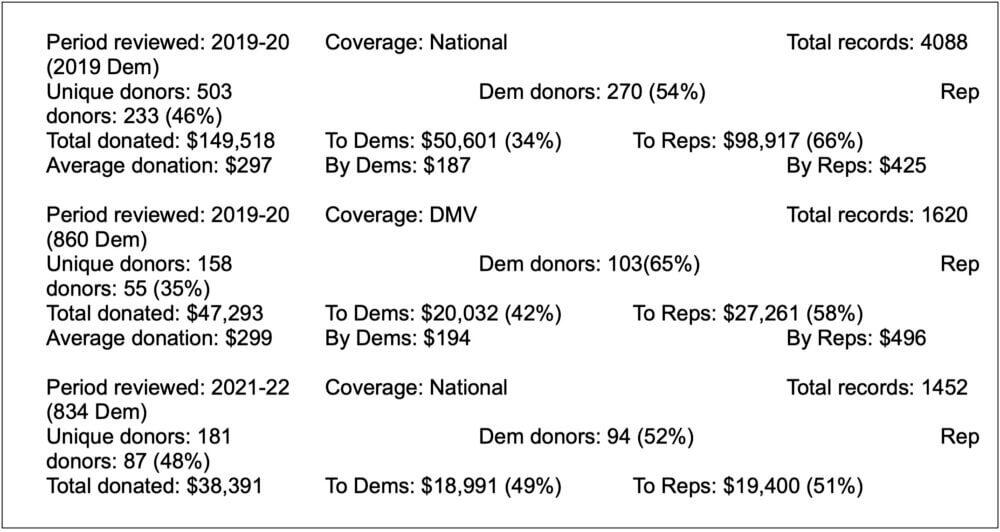
Conclusion and Recommendations
Apart from the presence of political appointees, there is no reason why the partisan makeup of the Justice Department and FBI should not reflect the overall partisan makeup of the country. We are, after all, supposed to be a country “of the people, by the people, and for the people.” In a time when there are credible allegations that government institutions have been politicized and weaponized against portions of the American population, the fact that one party is disproportionately represented in institutions responsible for protecting all citizens and equally enforcing the law is profoundly disturbing.
The Department of Justice is a huge bureaucracy that has become increasingly partisan under the influence of government employee unions. To ensure the department serves all Americans regardless of political affiliation, it should be broken up, and refocused on its original mission to support the attorney general’s office, with its other functions eliminated or returned to the states. The Justice Department’s career leadership should be sued in a class action lawsuit for discrimination against Republicans in hiring, and investigations conducted by Congress to determine the causes and consequences of politically homogeneous and partisan government employee unions.
Although the FBI is less partisan than the Justice Department as a whole (presumably because of the Democratic Party’s lack of support for law enforcement in general), its leadership is still unrepresentative, and the institution itself has a long history of corruption. It’s possible that the secrecy, absolute power and lack of accountability of national police forces (like the Stasi and Gestapo) inevitably leads to corruption and abuse.
To ensure accountability and decrease the possibility of systemic and institutionalized corruption, the FBI should be disbanded, and its law enforcement functions returned to the states. Functions that support law enforcement coordination and investigation across states, like the National Crime Laboratory, can be reconstituted, but without the power to arrest and prosecute crime, which is better handled by the states.
– – –
Tim Meisburger is a contributor to American Greatness.
Photo “FBI Agents” by Tim Pierce. CC BY 2.0.


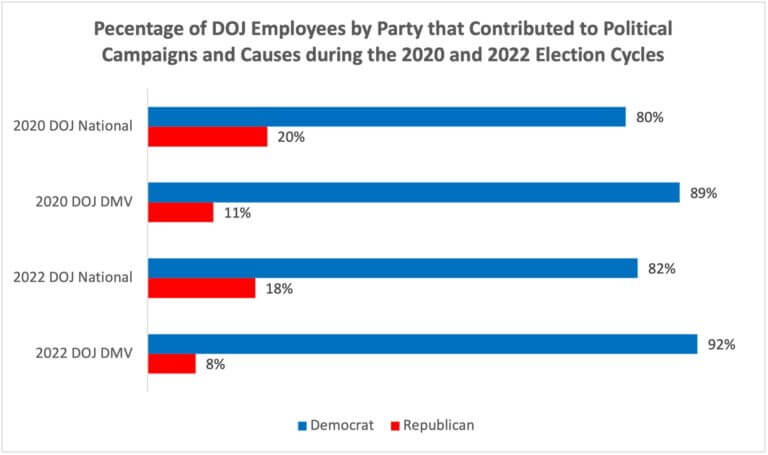
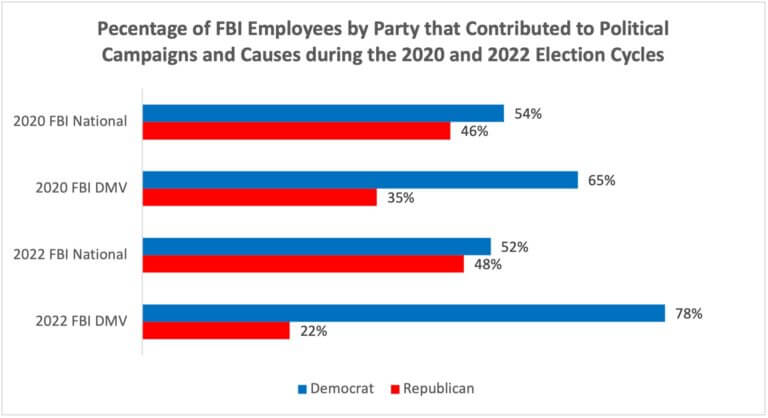


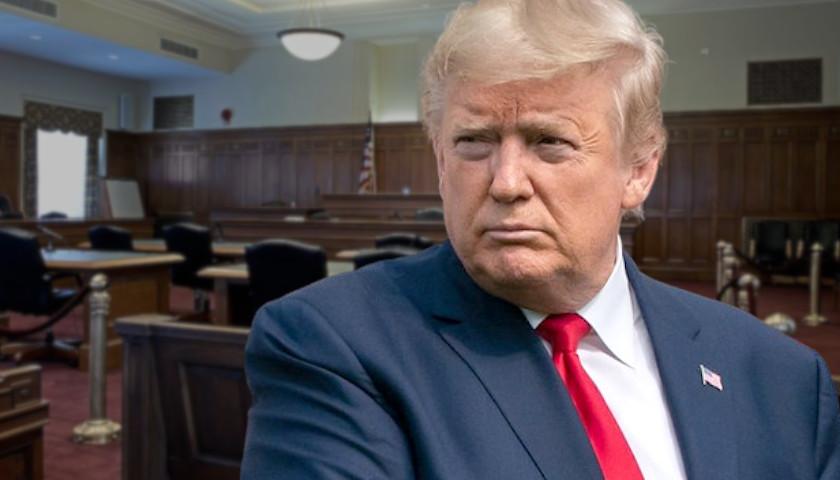

We’ve now had 234 years to develop a case study of our American government bureaucracy, which should be more than ample time to formulate remedies for its stupefying corruption and inefficiencies. There are nearly 2 million current fed employees, and another 2 million pensioners richly rewarded for their government service. When asked privately, most of these people laugh at the idea that they are ‘servants of the public.’ They are, in practice, RULERS of the public, fully insulated from the vagaries of job markets, job security, inflation or any of a host of other problems plaguing everyday Americans. If a remedy to this burgeoning behemoth is genuinely sought, it would begin with an analysis of the Constitutional validity of the departments of government, questioning their right to even exist. If acted upon, AT LEAST 2/3rds of federal government would vanish overnight.